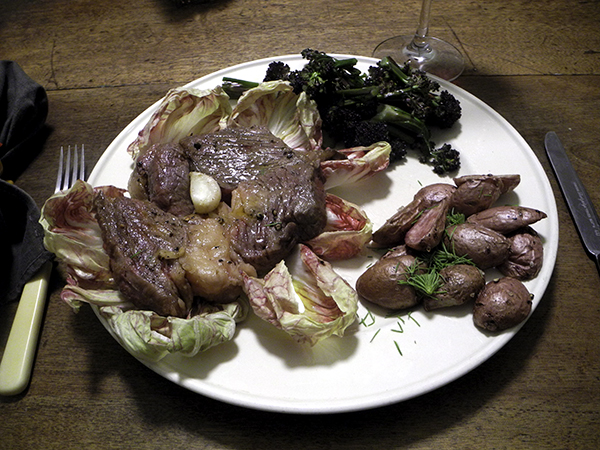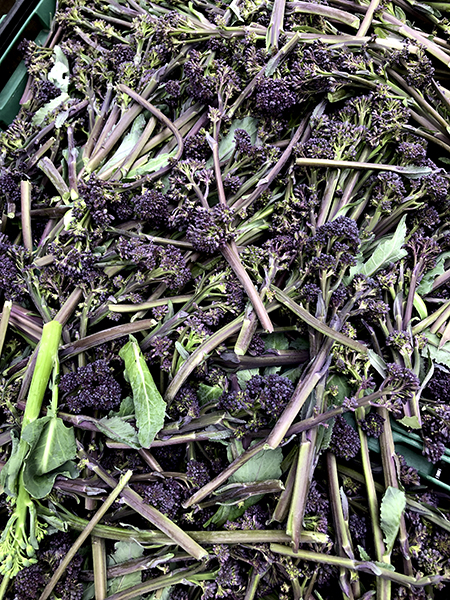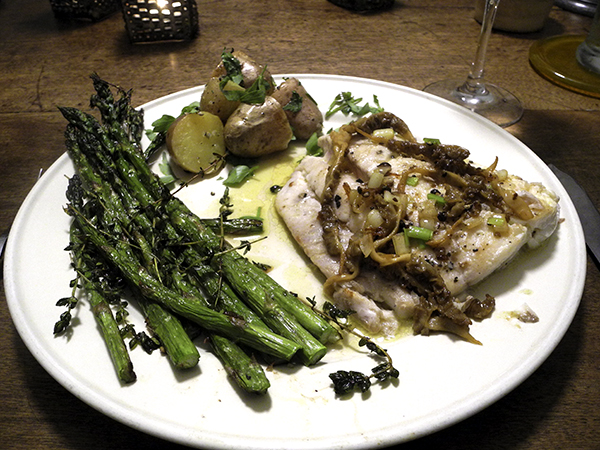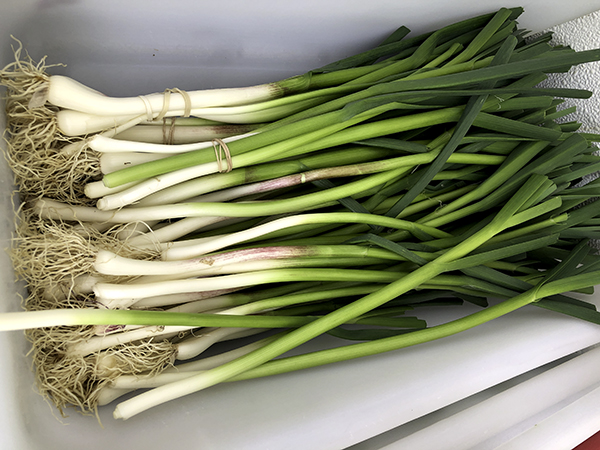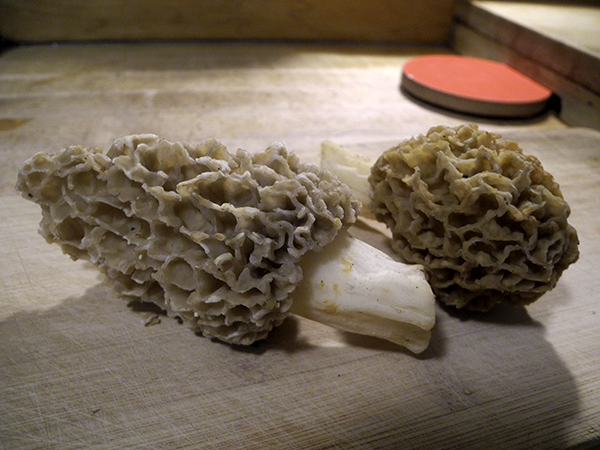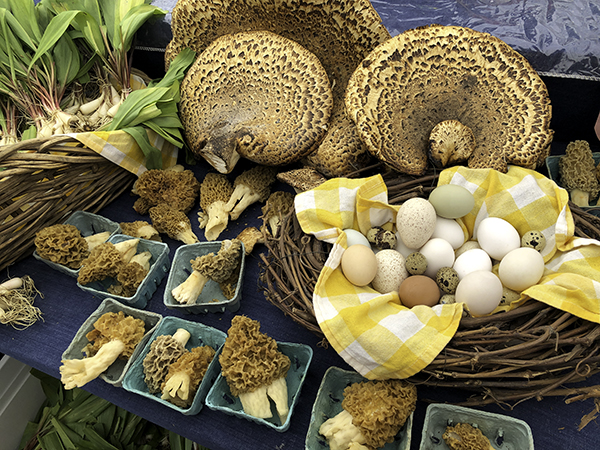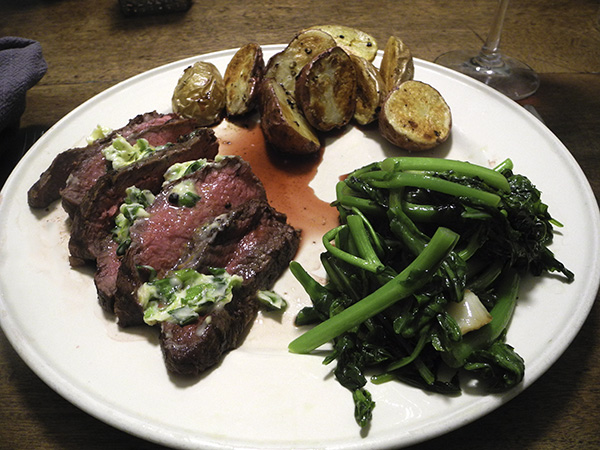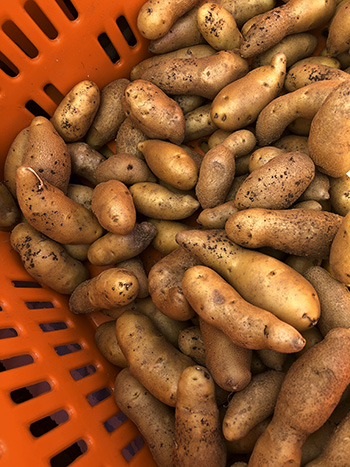
Most of the time, a single entrée plate with several different things on it, will offer two or three different experiences, and occasionally even more, but once in a great while, at least in my experience, they will all come together as slightly different aspects of a whole. This is what happened last night, with this wonderful meal.
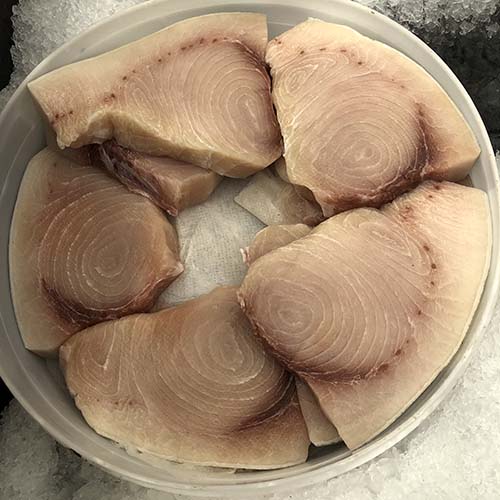
- one beautiful 11 and a half ounce swordfish steak from Pura Vida Seafood Company, halved, marinated inside a small antique rectangular ironstone serving dish for a little more than 30 minutes, turning once, in a mixture of a few tablespoons of olive oil, much of a teaspoon of a pungent dried Sicilian oregano, which is sold still attached to its stems at Buon Italia, a pinch of dried smoked serrano pepper from Eckerton Hill Farm, and a bit of thinly chopped garlic scapes from Norwich Meadows Farm, after which the swordfish was drained, both sides covered with a coating of homemade dried breadcrumbs and pan-grilled over medium-high heat for 3 or 4 minutes on each side, or until barely cooked to the center, removed from the pan and arranged on 2 plates, sprinkled with a little local Long Island sea salt (P.E. & D.D. Seafood), with some of the chopped green section of the scallion], drizzled with a bit of juice from a Whole Foods Market organic lemon and garnished with scissored garlic flowers from Alewife Farm (those very seasonal flowers were a small part of the preparation, but they make me very happy)
(those very seasonal flowers were a small part of the preparation, but they make me very happy)

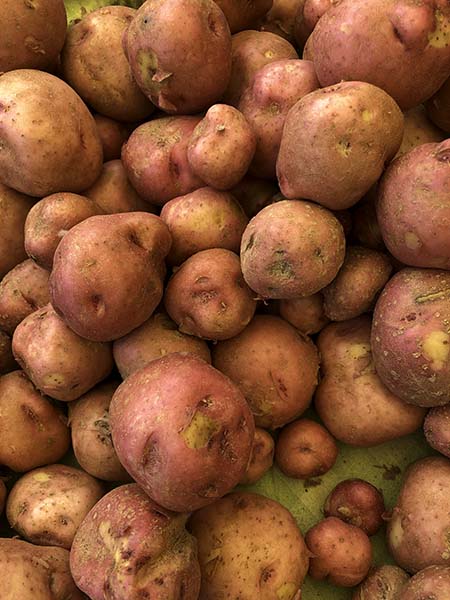
- one pound of Red Pontiac new potatoes from Cherry Lane Farms that I had purchased exactly one month before, prior to our 3 weeks in Berlin (so, not so new, but they see to have even improved with ‘age’), boiled with a generous amount of salt until barely cooked through, drained, halved, dried while still in the still-warm vintage medium size Corning Pyrex Flameware blue-glass pot in which they had cooked, rolled around inside in a bit more than a tablespoon of Whole Foods Market house Portuguese olive oil, sprinkled with salt and freshly ground black pepper, garnished with scissored dill blossoms picked just the day before, from Lucky Dog Organic Farm
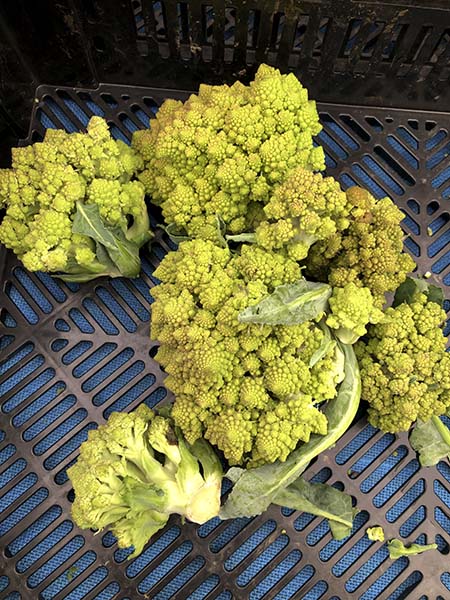
- one not very large head of Romanesco broccoli from Lucky Dog Organic Farm, broken up into florets, tossed with a little olive oil (not too much, to ensure some crispness and a carbonized finish), salt, pepper, and one crushed section of a dark dried habanada pepper, the mix spread onto a Pampered Chef unglazed ceramic pan and roasted at 400º for about 25 or 30 minutes, the outer leaves, trimmed, added just before the broccoli was removed from the oven, the mix stirred and arranged on the plates
- the wine was an Oregon (Willamette Valley) rosé, 2018 Oregon Rosé of Pinot Noir which we had ordered directly from Erath
- the music was a newy-discovered 1718 Neapolitan version of Handel’s ‘Rinaldo’, described as “a pastiche with a Mediterranean allure which Leonardo Leo assembled” 7 years after the premier of the original at the Queen’s Theater in London
